Espresso requires a very fine, consistent coffee grind in order to brew correctly, and thus a specifically designed and engineered professional grinder. Other factors: choosing the correct size and model for speed, efficiency and consistent quality to keep up with your espresso machine during busy hours at your coffee shop or restaurant.
Espresso requires a very fine, consistent coffee grind in order to brew correctly, and thus a specifically designed and engineered professional grinder. Other factors: choosing the correct size and model for speed, efficiency and consistent quality to keep up with your espresso machine during busy hours at your coffee shop or restaurant.
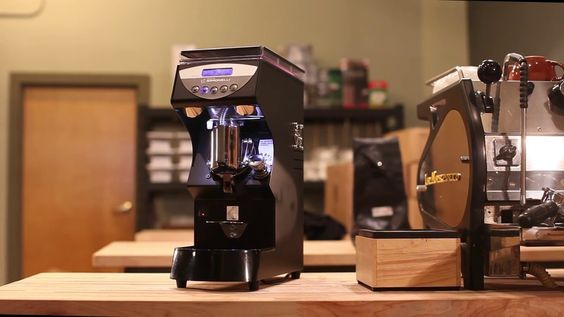
Here’s a short guide to help you make the right decision when purchasing an espresso grinder for your business.
WHAT WILL IT COST YOU?
As with all commercial equipment, coffee grinders require food and utility safety certification and thus, can be relatively expensive. Add to this the fact that nearly all units are made in Europe (primarily from Italy) and the costs can vary from $500 to as much as $4,000. Typically you can expect to pay between $1,000 and $1,500 for a traditionally sized commercial espresso grinder for a typical espresso coffee operation.
But before making a decision based on price, consider motor speed, burr size, burr type, hopper size and dosing type.
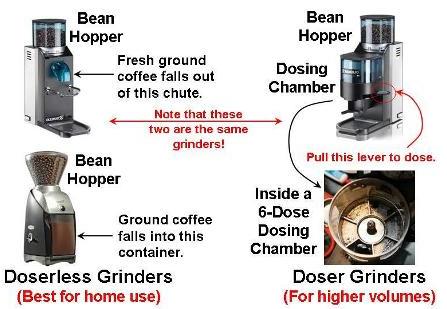
DOSING CHAMBERS VS. DOSERLESS GRINDERS
A doser or dosing compartment is where coffee is disbursed after being ground by an automatic grinder. They keep grounds from falling on the counter and provide one-shot measurements for each espresso you make. The dosing compartment has been around since the 1920s and has been used consistently ever since.
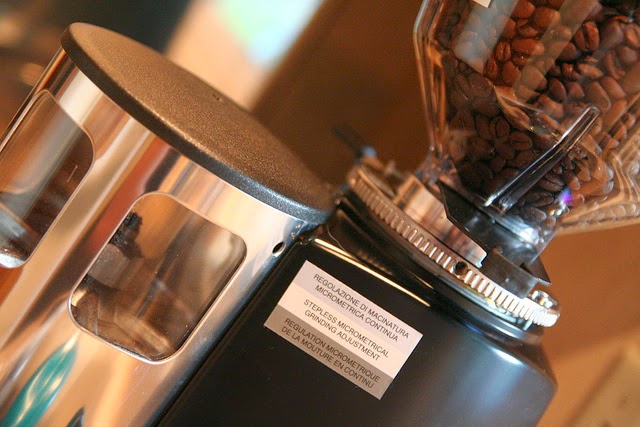
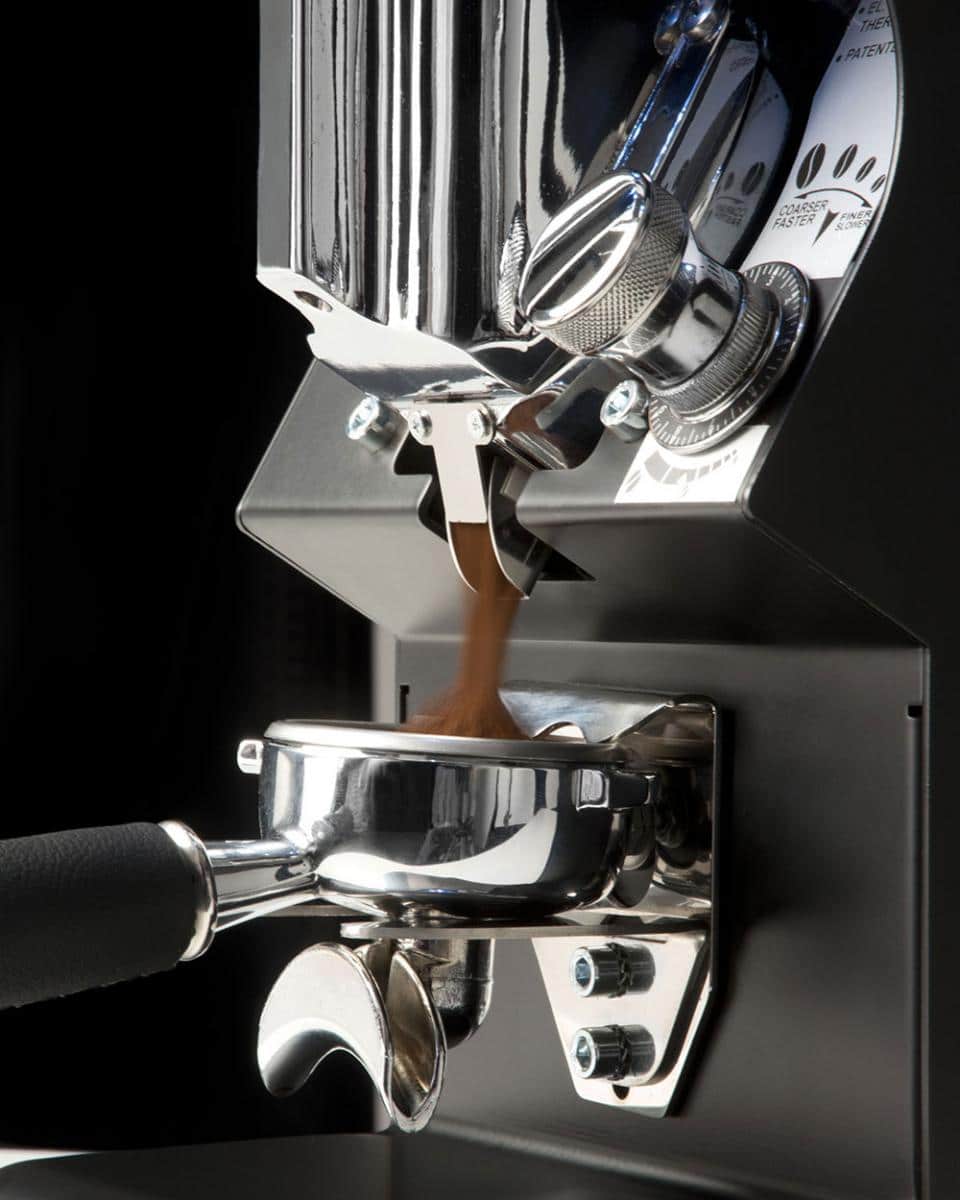
However, in recent years there has been a movement toward a more pure, exacting method for dosing espresso coffee, after much research and discovery around how coffee flavor is affected by brew time and temperature. Unfortunately, when a doser is used, there is a tendency for too much coffee to be ground at once, leaving some behind for future use. Baristas may grind more beans than necessary for one drink order, then then next and the next — building up ground coffee in the dosing compartment. By the time the coffee is used, it may no longer be fresh.
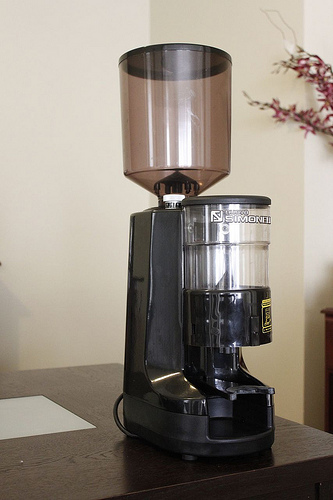
Nuova Simonelli MDX Grinder
The doserless grinder is the answer to this problem.
A doserless, or semi-automatic grinder does not have a dosing compartment. The grounds are simply deposited straight into a waiting portafilter. This enables every single shot that to be made with freshly ground coffee beans — not something that has been sitting in a compartment for a while. The one downside to using a doserless grinder is that it will make a much larger mess than one with a dosing compartment. Coffee grounds will fall directly on to the countertop if a portafilter is not placed directly under the grinder, and even when a portafilter is present, grounds inevitably spill over the sides.
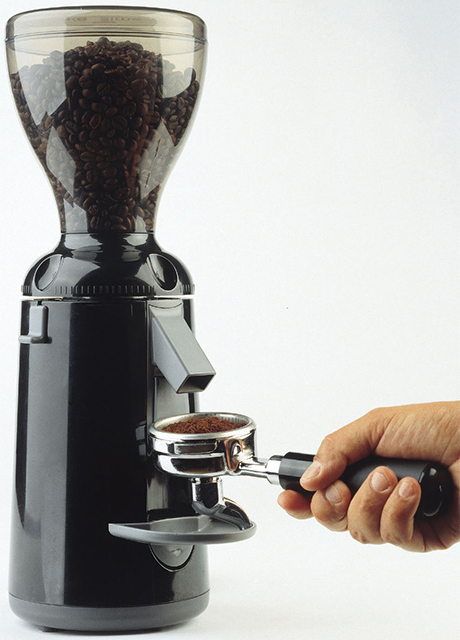
.jpg)
Nuova Simonelli Grinta Black grinder
A few grinders have large compartments for holding ground coffee beans, but such grinders are not recommended. Grounds will quickly become stale and unsuitable for a good shot of espresso.
GRINDER BURR TYPES: CONICAL VS. FLAT
There are two primary types of commercial burr grinders: Flat and conical style blades. Both types have a multi-cut angled tooth edge that is engineered to cut coffee into smaller and smaller particles until a very fine and consistent powder is produced that is ideal for espresso coffee. Both also have one stationary top blade and one spinning lower blade.
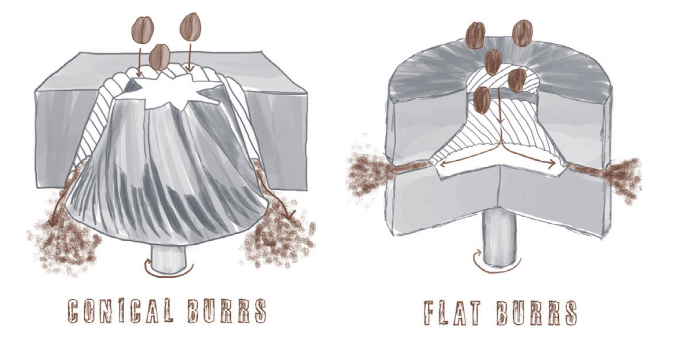
With flat burrs:
Parallel horizontal plates pull coffee beans into the grinding teeth through the centrifugal force of a fast moving motor.
Once the coffee beans contact the grinding teeth, the beans are broken apart.
The beans are cut into smaller and smaller pieces as the speed of the lower blade forces them through smaller and smaller cutting edges, to form a fine powder.
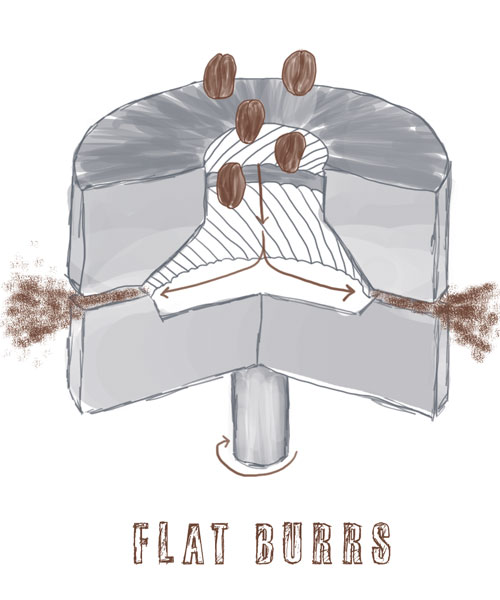
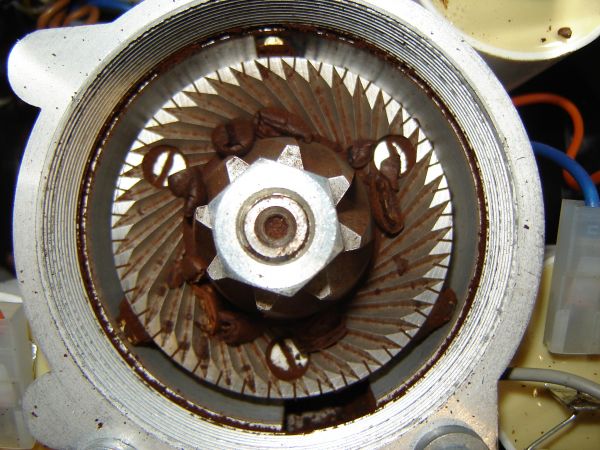
With conical burrs:
Gravity is the primary force used, as the burrs cut vertically at an outward angle, pulling the coffee downward.
Coffee beans are cut into smaller and smaller particles until the desired fineness is reached.
Because no centrifugal force is required, conical burrs grind coffee at a much slower speed, resulting in lower heat transfer to the coffee beans and less likelihood that the grinder will heat up the coffee and alter its flavor before being brewed.
Conical burr grinders are designed for use in very high volume applications — such as Italian espresso bars producing several thousand shots per day. In busy shops, flat burs may get too hot to produce consistently good espresso. But both burr types produce similarly sized ground coffee particles, and flat burrs rarely increase coffee temperature more than 20° above room temperature in the most extreme uses, and follow empirical testing standards.
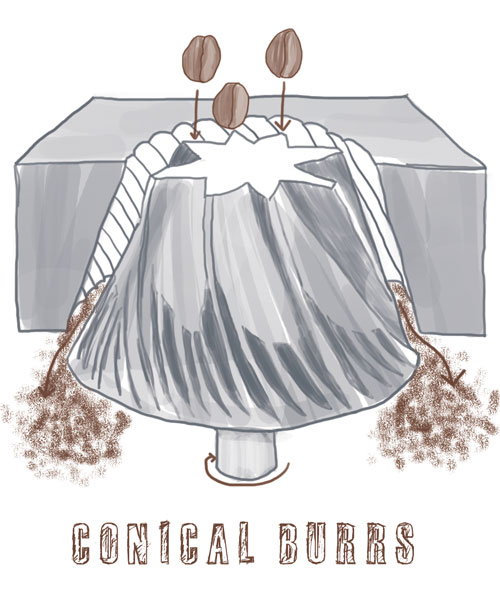
.jpg)
